Why Namibia Is The New Safari Destination
Why Namibia Is The New Safari Destination : Nearly thirty years have passed since Namibia gained its independence from apartheid-era South Africa, which ruled over it shortly after World War II. Its pre-1915 German heritage may still be seen in everything from place names to confections to clothing worn by Herero ladies in multiple layers of skirt in spite of the heat. Germans came up with the notion to preserve their modesty, and they still do.
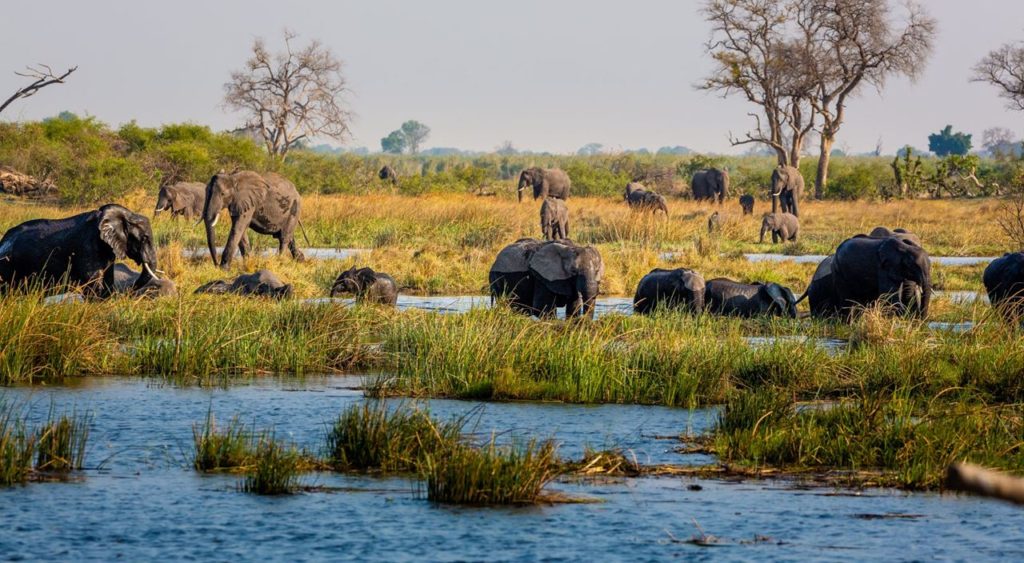
Namibia, previously referred to as South West Africa while under South African control, is located on Africa’s South West Coast, the driest country in sub-Sahara Africa. Its Atlantic coast, also referred to as the “Skeleton Coast,” is a region where numerous ships have sunk. The waters are frigid because they originate in Antarctica and barely warm as they approach the Equator. Long portions of the shoreline are bounded by enormous sand dunes; the only precipitation comes in the form of mist. With a population of only 2.5 million people (including a few aboriginal tribes), Namibia is a small country spanning more than 800,000 square kilometres. International visitors typically land in the nation’s capital, Windhoek, before continuing their journey.
Continue reading to discover more about Namibia, its deserts and beaches, and why it makes such a fantastic safari destination.
Fish River Canyon.
After the Grand Canyon in the United States, the Fish River Canyon in the south is the second-largest canyon worldwide. In the sweltering summer months, the 85-kilometer trail closes, and day trippers are not allowed to descend into the canyon. At 800 kilometres, the River is the longest in Namibia, yet during the dry season its uninterrupted flow is interrupted.
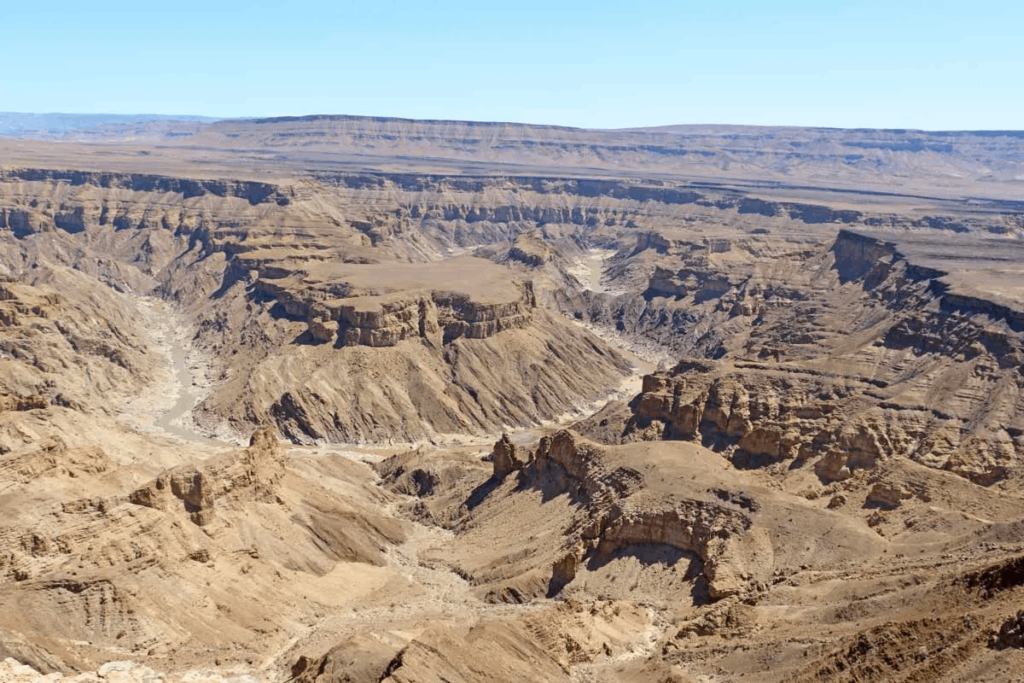
Namib Naukluft Park.
This 50,000-square-kilometer park is situated south of Windhoek and was created forty years ago. The Namib, the oldest desert in the world, is one of the park’s highlights; it extends well beyond the boundaries of the park. The tallest sand dunes in the Park are 300 metres high, constantly moving, and somewhat difficult to climb. You will be rewarded with breathtaking views of the sunrise if you can complete it while it is still dark. The most well-known dune is number 45, with its vibrant hues of blue sky, deep shade, and nearly crimson sand a photographer’s safari paradise.
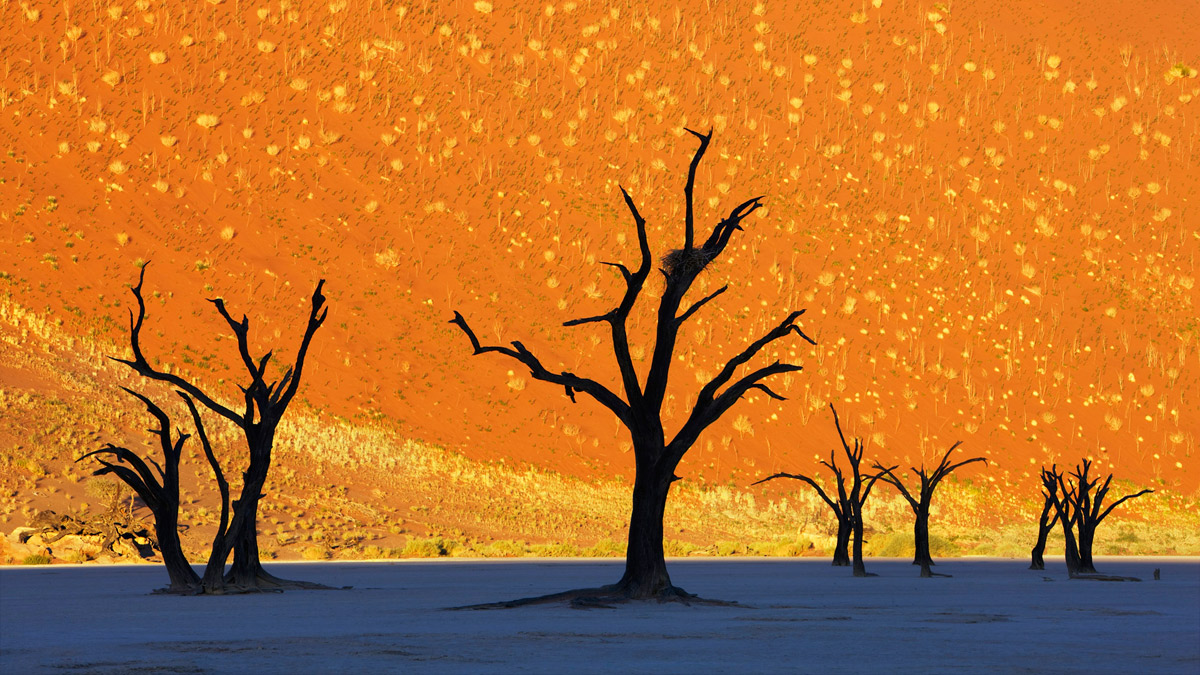
While not all of the Park is accessible to tourists, Sossusvlei and Sesriem are unquestionably two of the most popular sites. While Sossusvlei is a salt clay pan surrounded by dunes that sporadically fills with water, the latter is home to a kilometer-long canyon. The nearby Dead Vlei is just that a patch of scarce, dead trees that, due of the extreme dryness, have not decomposed.
The 2,000-meter-tall Naukluft Mountains are to the east of the park, while Sandwich Bay, to the north, is a birdwatcher’s safari paradise with flamingos, pelicans, and cormorants in large numbers.
Swakopmund & Walvis Bay.
Swakopmund is a small city of around 35,000 people on the central coast of Namibia, northwest of the Park and due west of Windhoek. The town museum has its history displayed, and the aquarium is worth seeing. There are a few tourism safari attractions close to Swakopmund. Tours to the sea and inland across the desert and its sand dunes are available at Walvis Bay, to the south.
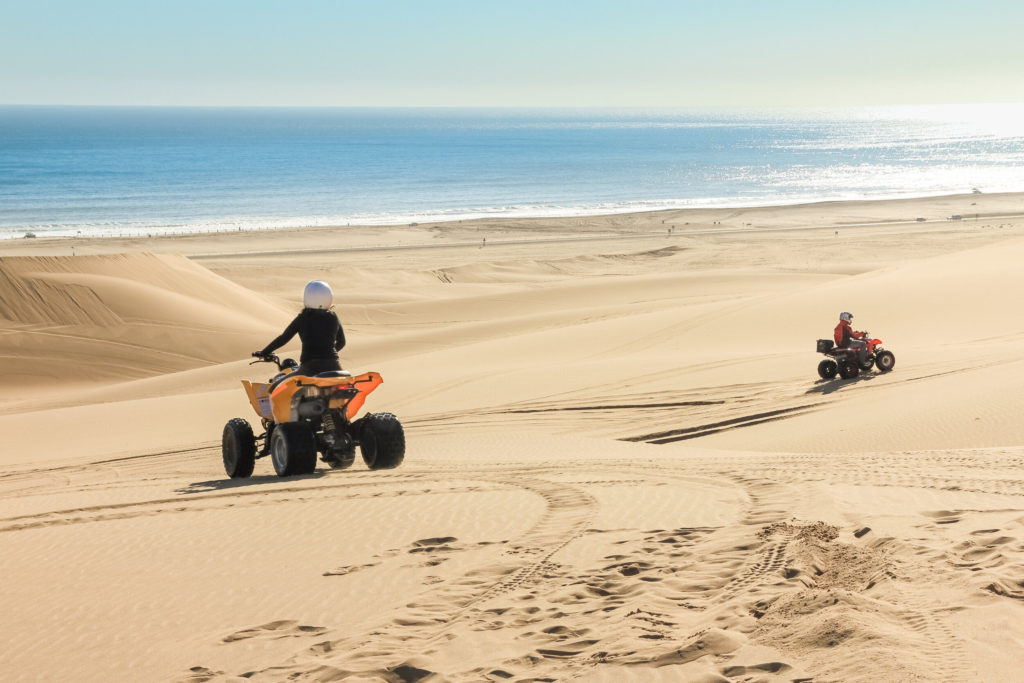
Cape Cross Colony.
You will arrive at Cape Cross if you travel north along the coast. The frigid Benguela current supplies an abundance of fish to feed the world’s largest cape fur seal colony, which is situated in spite of the rather unappealing Atlantic waters. There are occasionally 100,000 enormous males, females, and pups in the colony.
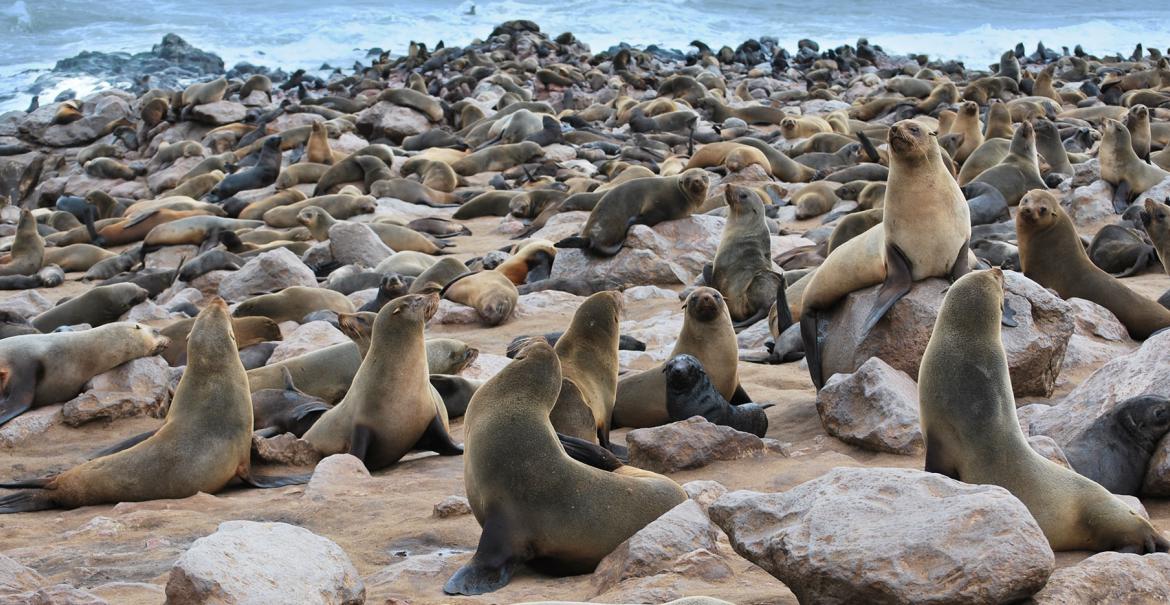
Damaraland & the Petrified Forest.
Despite its severe terrain, Damaraland is home to a variety of fauna. Although it may be hard to believe, there are desert elephants in Namibia that manage to find water in underground rivers, among other places. Travellers may not frequently witness oryx, rhinos, cheetahs, and other small creatures, but they do exist.
The Petrified Forest, ancient wood now fossilized into stone lies around and will do so forever. The logs are supposed to have been carried here by historic floods, but they are staying put. There are reports that some of the rare vegetation is hundreds of years old.

Waterberg Plateau.
As you travel north from the capital, Windhoek, to Etosha, you will see the Waterberg Plateau rising out of the lowlands. It’s a table mountain that gets enough rain to stay green despite the fact that water seeps through the porous granite and cascades down the sides. Significant species, including as giraffes, buffalo, antelope, and rhinos, can be found on the Plateau.
Etosha National Park.
Germans founded Etosha in the north at the beginning of the 20th century. Its 23,000 square kilometres are mostly dry, resembling a big salt pan, but there are also a lot of waterholes that draw a variety of wildlife, including giraffes, elephants, rhinos, lions, and cheetahs, as well as numerous prey species that tremble to get water because they know there may be predators nearby.
Etosha is one of the most significant game parks on the continent because of its rich animal and birdlife, and it has three permanent camps with plenty of tourist amenities.
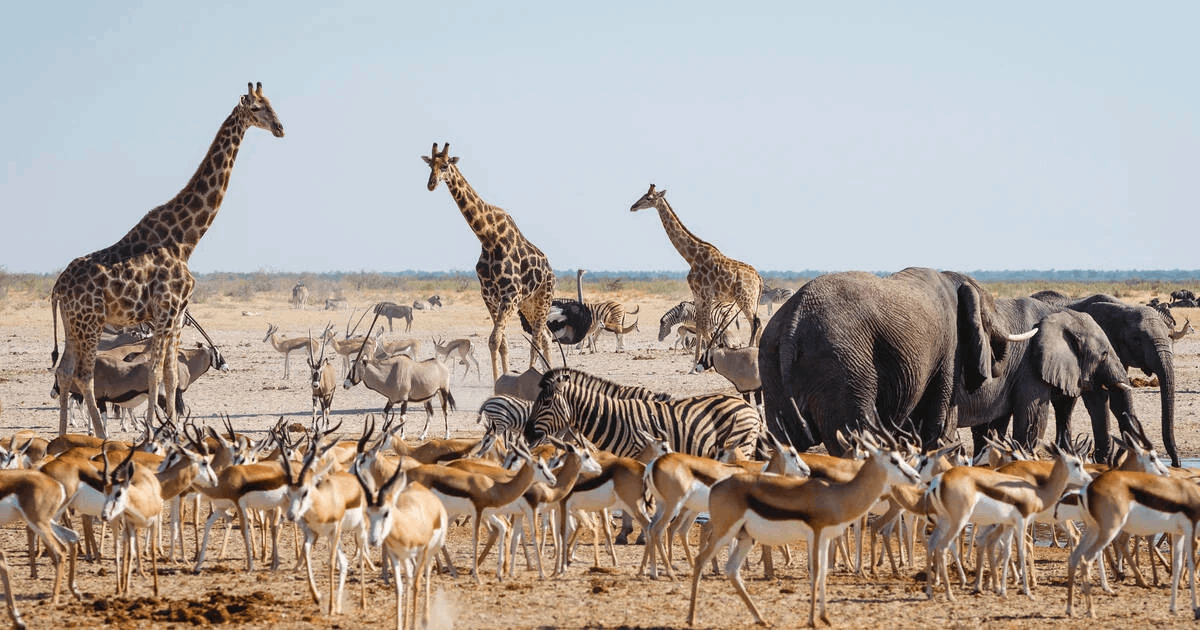
Caprivi Strip.
The Caprivi Strip, a narrow band of land in Namibia’s extreme northeast that connects to Botswana, Zambia, Zimbabwe, and the Zambezi, is home to a wealth of wildlife while drawing fewer tourists. It was not particularly safe at one point, but the problems are now resolved, so those who enjoy nature should have a look. Its year-round lushness contrasts sharply with much of Namibia.
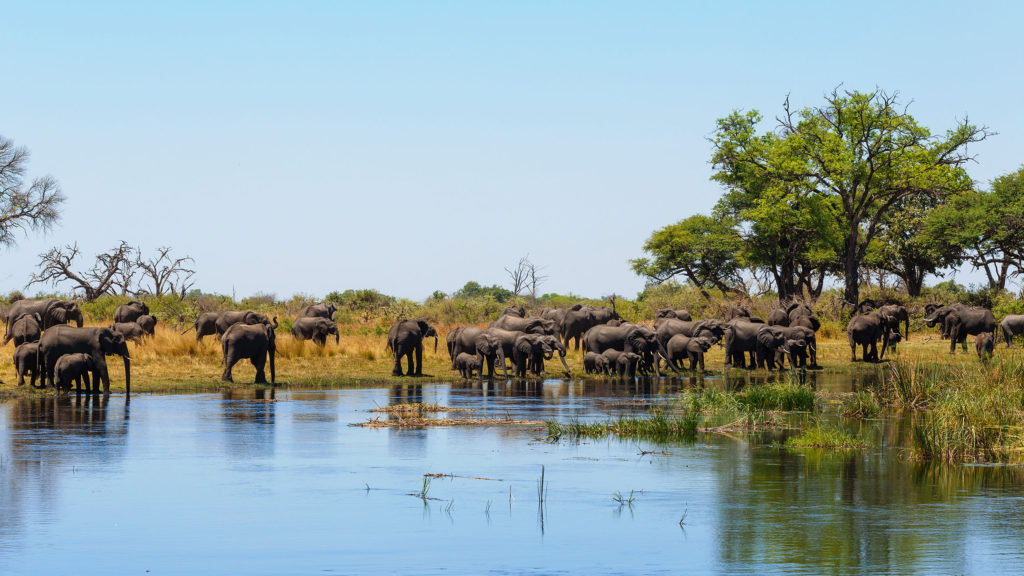
Conclusion.
Most of Namibia’s neighbors in the sub-Saharan region don’t pay it much attention, yet it’s a breathtaking nation with diverse landscapes and abundant wildlife. Because of Namibia’s excellent and comparatively empty highways, getting around and experiencing the country is simple and fun. Don’t forget to bring your camera in case your buddies don’t think your tales are real.
